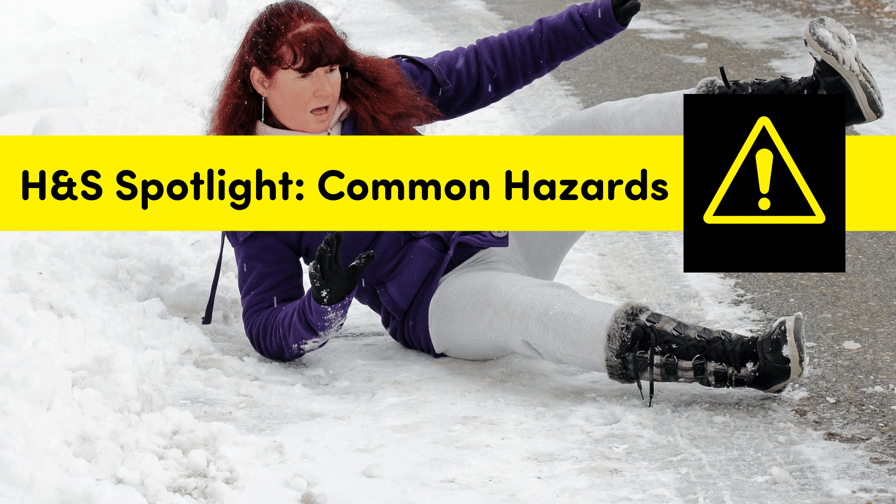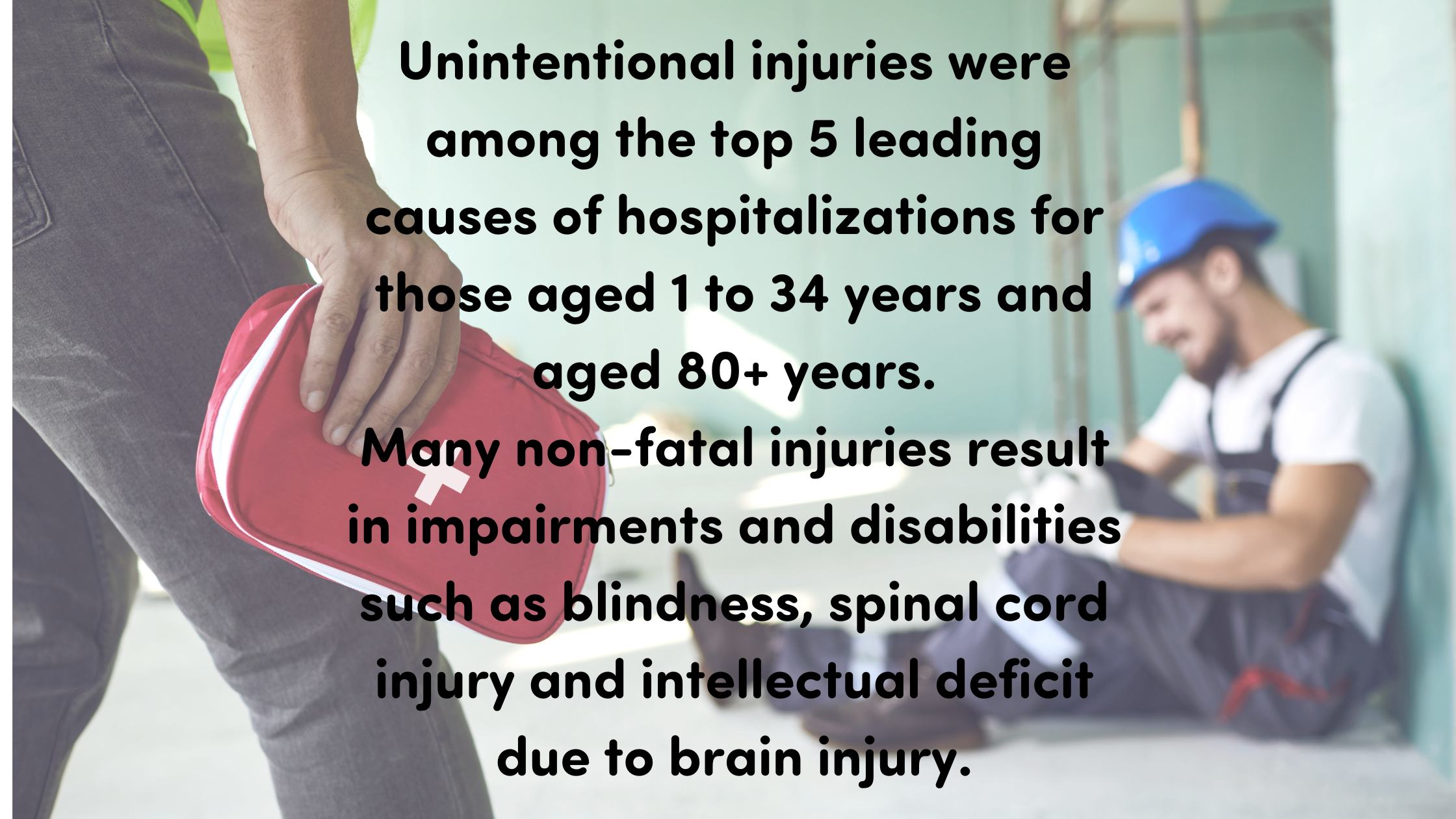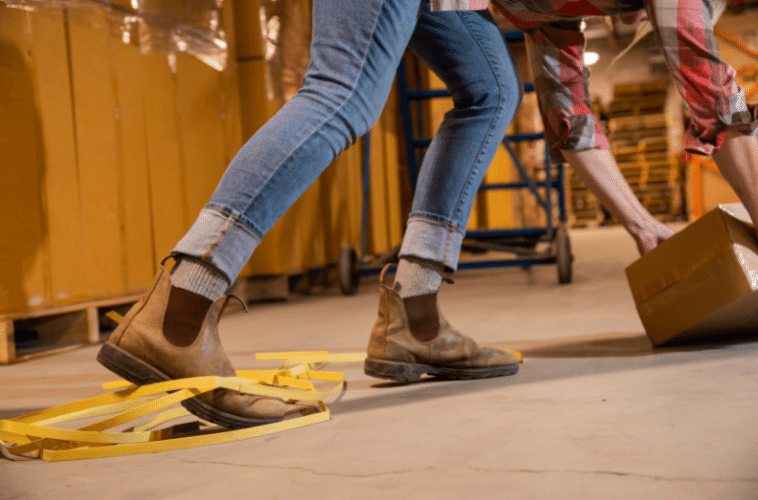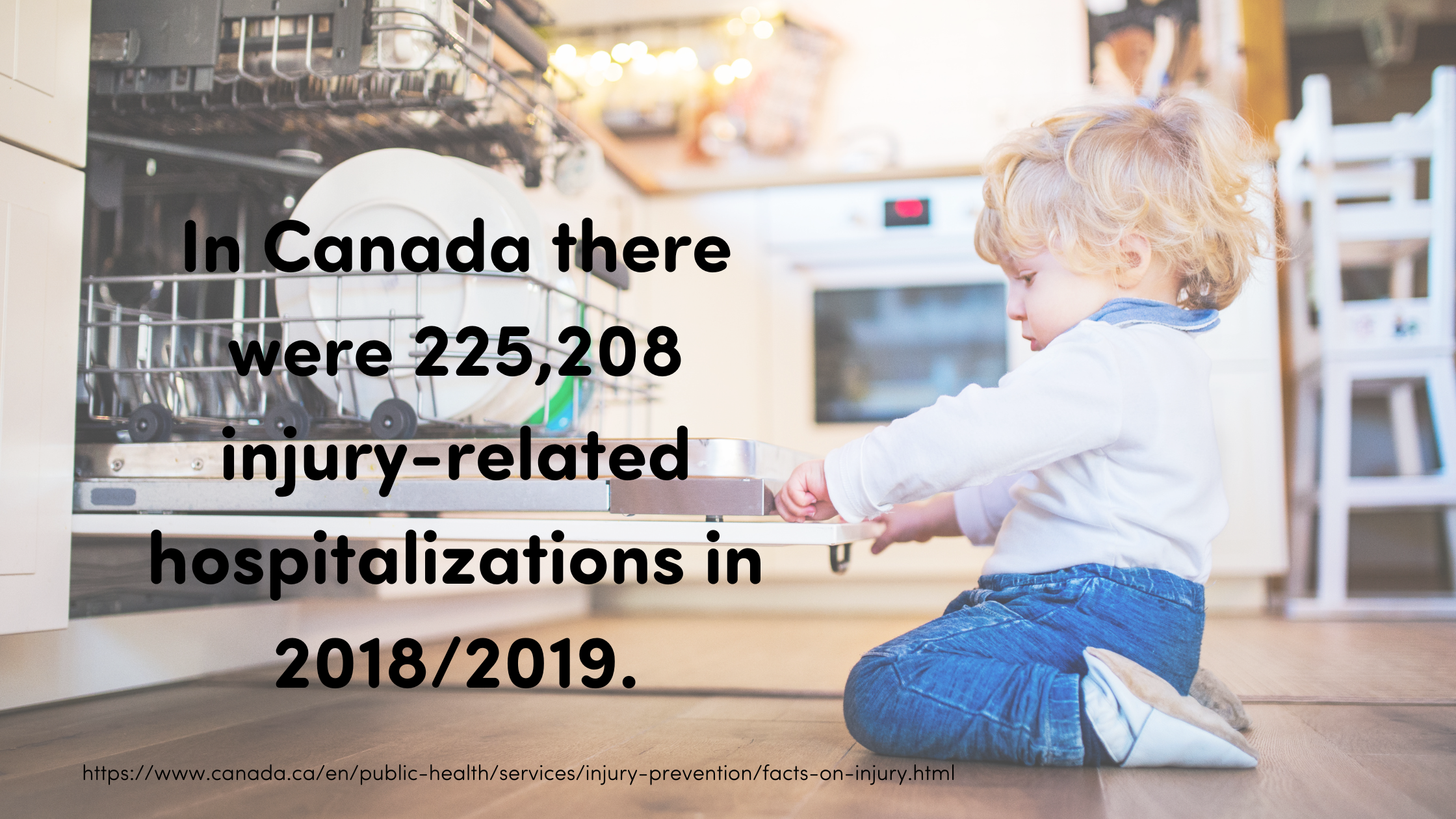The previous four spotlights have focused on things you can do proactively to lead a healthy life and stay safe. Today is about situations and hazards that pop into your path or space and require immediate action to avoid serious injury.
Despite your best efforts, you're going to be faced with situations that are going to need your attention and action. Being informed and prepared is the best defense against "Murphy's Law".
In today's spotlight, we look at Common Hazards.
 Avoid falling in the winter by walking on plowed sidewalks and clearing and salting/sanding your driveway.
Avoid falling in the winter by walking on plowed sidewalks and clearing and salting/sanding your driveway.
Health and Safety professionals have identified ten of the most common types of hazards that you are likely to experience in the workplace and at home. These are hazards related to working at height, chemicals, housekeeping, electrical, forklifts, lockout/tagout and confined spaces.
In no particular order, the ten major hazards in the workplace:
Watch how H&S consultants identify areas of potential hazards.
In 2018/2019, falls were leading cause of injury hospitalization among all ages in Canada. Working at heights at home or at work requires special attention.
Repetitive motion/strain injuryRepetitive motion injuries are caused by overuse of a particular muscle or group of muscles. As a result of this overuse, microscopic tears develop in the tissue. When the body can't repair these tears as fast as they're being made, inflammation occurs, causing pain and other symptoms. The causes of repetitive strain injuries can be classified in the following ways:
|
|
When it comes to chemical exposure, almost every workplace and home in Canada has some risk.
From workers in chemical plants to offices where substances like bleach or surface disinfectants may be lying around (especially with increased hygiene protocols around COVID-19), most workers are brought into contact with chemicals in some capacity.
Knowing how to properly handle and read labels is an imperative.
Understand the Whimis Health Hazards Classes
Know the location of your eye station and emergency shower (if required)
Speak up and alert someone if you think you've been exposed.
WHMIS 2015 classifies chemical hazards into 2 groups: physical hazards and health hazards. These groups are further broken down by hazard class with 20 physical hazard classes, that describe harm such as fires or explosions, and twelve health hazard classes, defining the types of harm that can occur to humans. Each of the health hazards have their own concerns. If you work with chemicals regularly ensure you are reading the WHIMIS handbook and staying up to date safety guidelines.
Often called "slips, trips and falls", slip is when you lose your footing, trip is when you catch your foot on or in something, and fall is when you come down suddenly.
Spills, ice, snow, rain, loose mats, rugs, and stepladders are some of the common causes of slips, trips, and falls. In addition, poor lighting and clutter can cause injuries such as sprains, strains, bruises, bumps, fractures, scratches, and cuts.
Definitely not everyone's favourite chore, but a clean workspace eliminates a lot of potential injuries by giving room to work, avoiding spills, things fall over and being able to find things quickly in an emergency. Plus, a clean workplace can improve productivity and looks professional.
To help manage your space, a few suggestions are:
https://www.ecoonline.com/blog/11-tips-for-effective-workplace-housekeeping
Most, if not all, of the above hazards are also relevant for homes, accept we often do not take the same precautions and definitely not the same rigour and training. For example, proactively reading house cleaning labels and understanding the poison labels are often a nice-to-do but we never make time. And yet, those we love the most, are often most at risk.

Some more common home hazards include falls, poisoning, carbon monoxide, fire hazards drownings, choking, sharp objects, stoves, dishwashers and suffocation.
At Agilus Work Solutions we serve our candidate and employer networks, to lead a connected, forward-thinking work community. We understand that work is an important piece of your work+life equation. Simply put – we care about your whole life, work included.